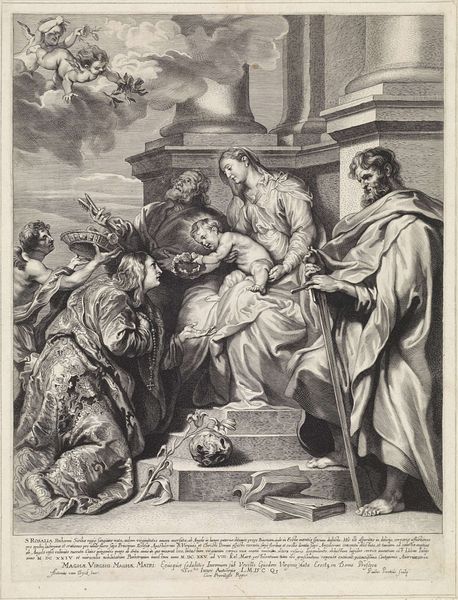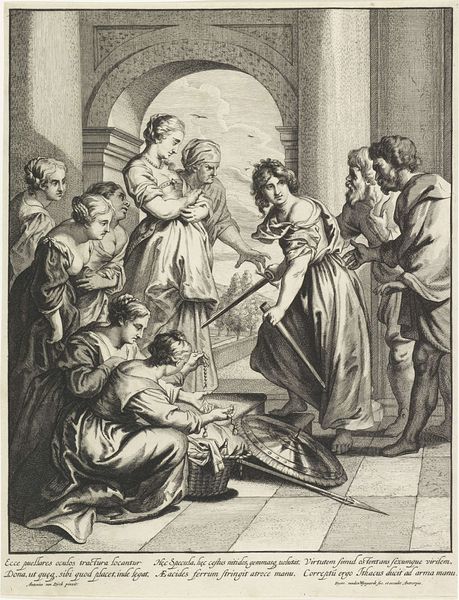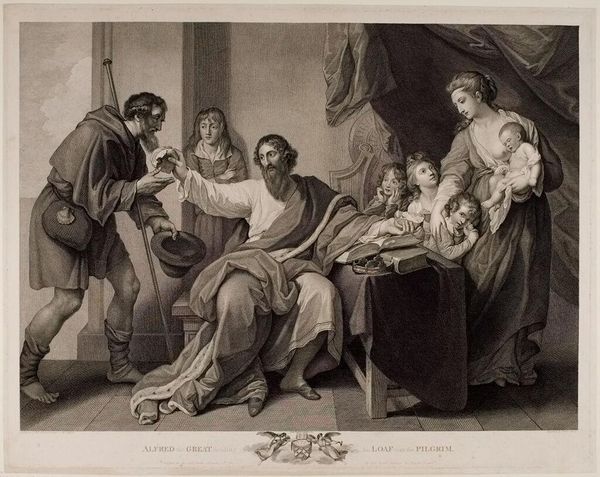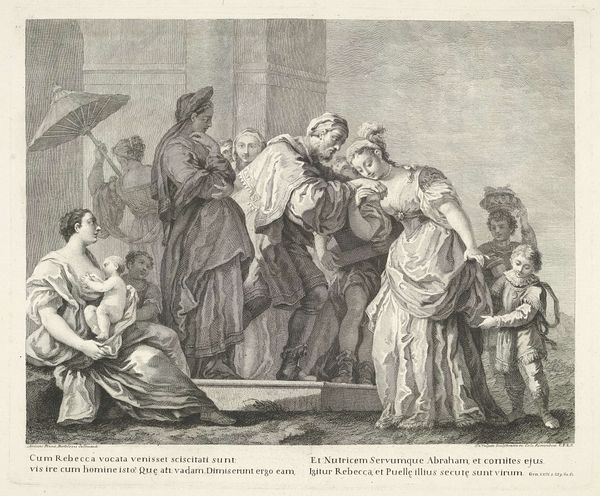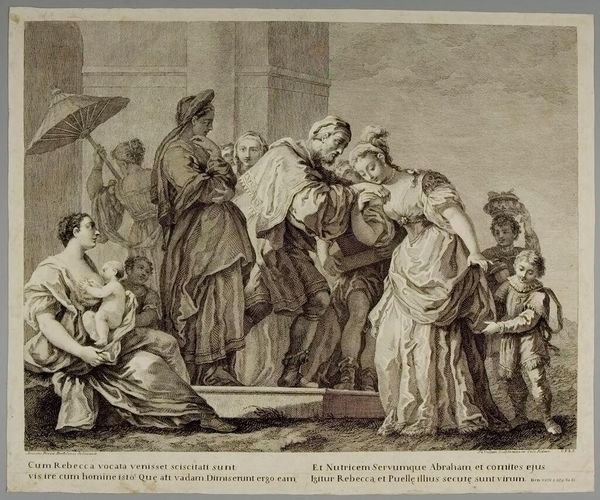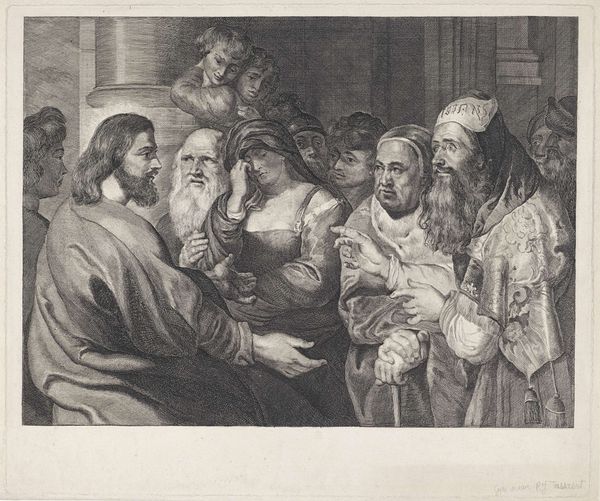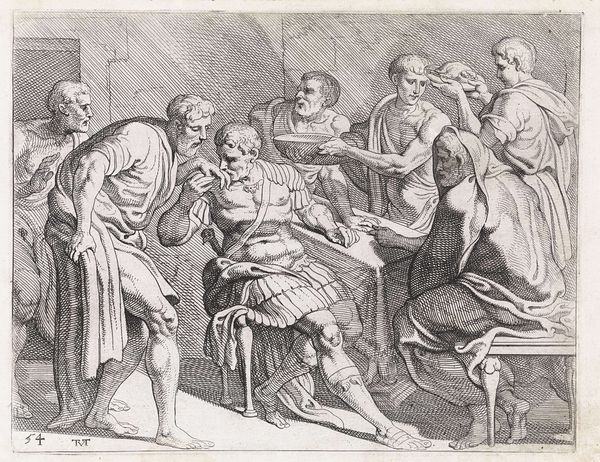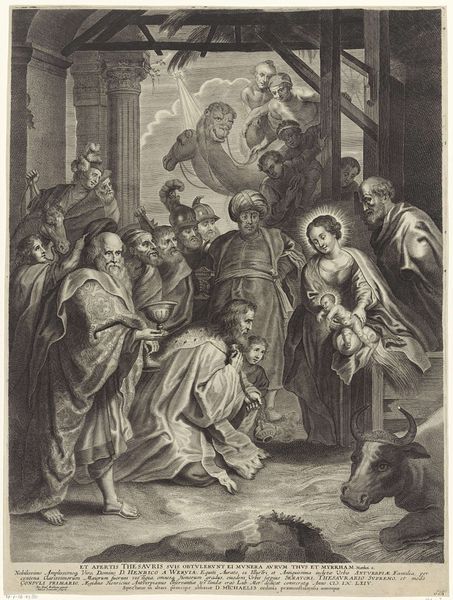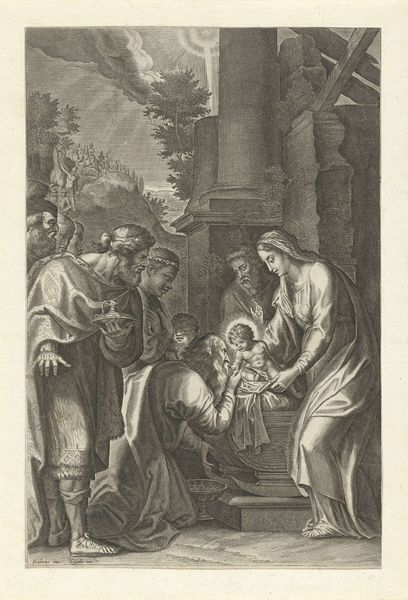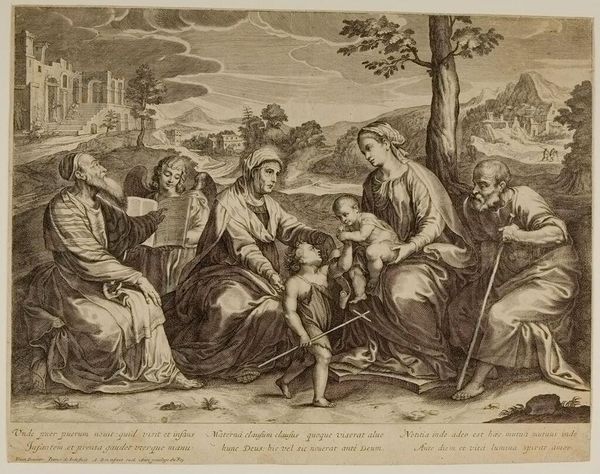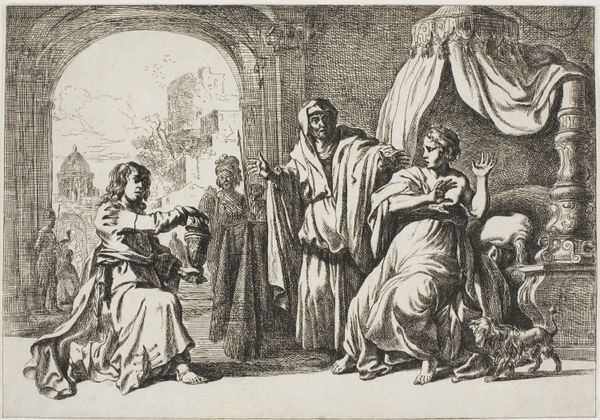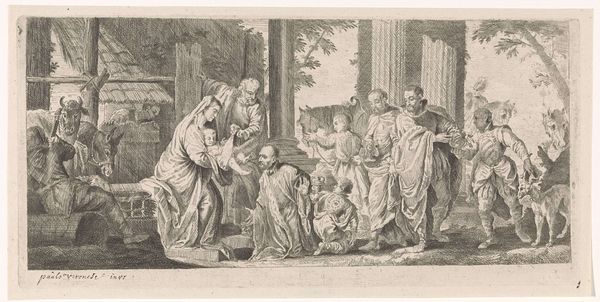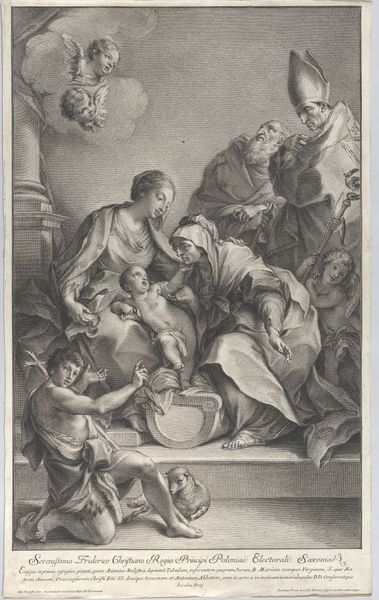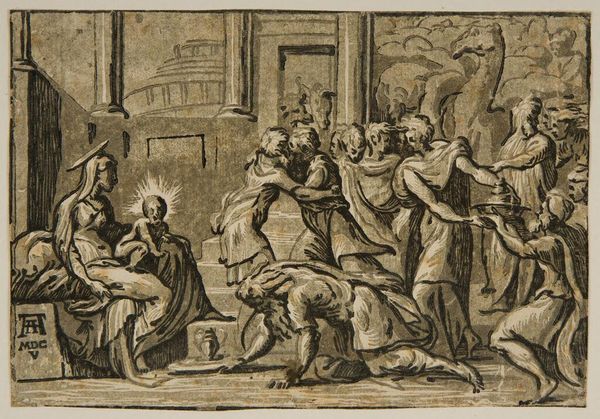
painting, oil-paint
#
portrait
#
narrative-art
#
baroque
#
painting
#
oil-paint
#
figuration
#
christianity
#
men
#
history-painting
#
christ
Dimensions: 236 x 262 cm
Copyright: Public domain
Curator: Bartolomé Esteban Murillo's painting, “Return of the Prodigal Son,” completed around 1670, hangs here in the Museo del Prado. The scene feels immensely intimate despite the grand architectural backdrop. What strikes you initially? Editor: It's the vulnerability. The light concentrates on the father's embrace and the son's tattered clothing – it speaks to themes of forgiveness and societal breakdown right now, actually. Curator: Absolutely. And think about the materiality—the way Murillo layered the oil paint to achieve such rich textures, contrasting the roughness of the son's garments with the smoothness of the father's robe. These aren't just aesthetic choices; they highlight economic disparity and its effects on human bodies. What kind of labor was involved, too, in the creation of the painting itself—from pigment to canvas? How does class determine our access even to repentance and grace? Editor: Those are poignant points, grounding the spiritual narrative in earthly realities. The history of painting these stories normalizes patriarchal structures, right? The father has ultimate power. The narrative reinforces the hierarchy within the family. The composition—the kneeling son, the elevated father—further emphasizes social standings of subservience to higher powers and gender imbalances of authority within familial, societal systems. It begs questions: Whose stories get told? And from whose perspective? Curator: Right! The creation of the painting involved labor dynamics, consider then its accessibility. Historically, art like this affirmed the Church's social authority. These gorgeous displays were strategically shown, reaffirming biblical ideologies with visible depictions, often funded through economic systems and religious beliefs to spread ideology. Editor: Precisely, and looking at it today, it prompts me to consider the ongoing power dynamics represented here, within the framework of social reform and equal recognition for all persons. Murillo's skill is undeniable; however, it serves as a powerful means for considering intersectional frameworks that go beyond aesthetic assessment, which include gender, social role, identity, etc. Curator: Indeed, acknowledging those undercurrents enriches our understanding of the artwork beyond surface aesthetics or technical mastery, urging viewers to contemplate ethics in creation, viewing and its continued cultural effect. Editor: Absolutely, it gives rise to many avenues for analysis – all important to acknowledge in a historical lens with lasting significance in current global societies.
Comments
No comments
Be the first to comment and join the conversation on the ultimate creative platform.
